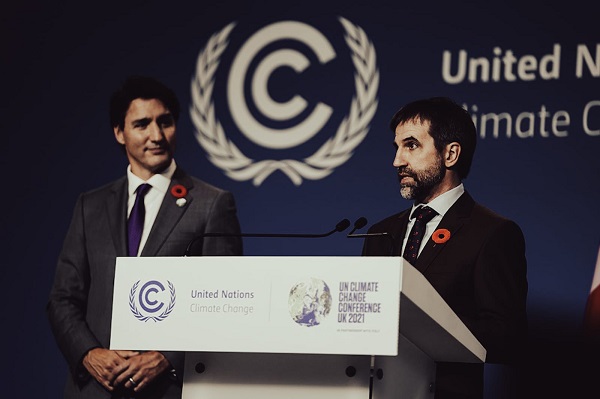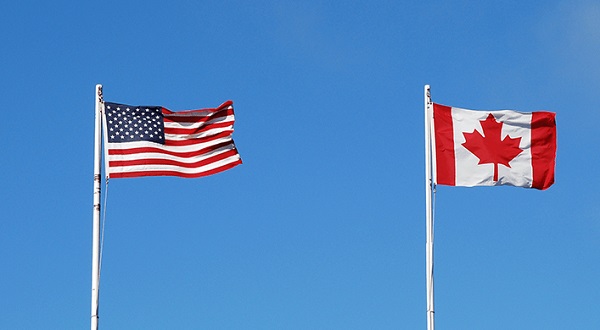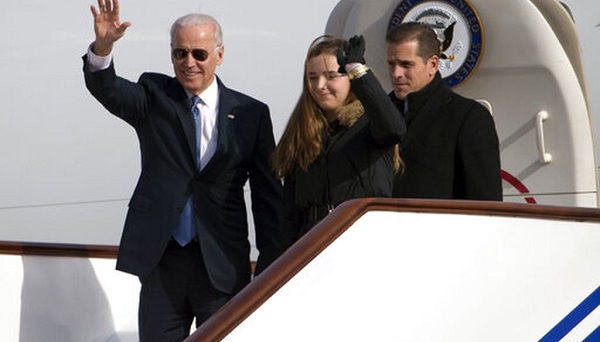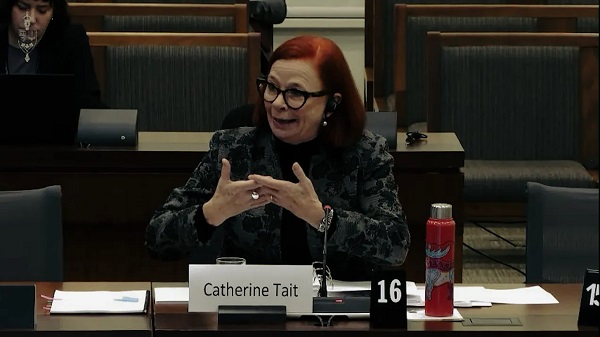Entertainment
Laughter Returns to Red Deer

For the better part of the last two years, laughter has been hard to come by. Live entertainment came to an abrupt halt, with no certainty of when it would return.
The wait is finally over.
Not only are Central Alberta’s venues reopening, they are bringing back live shows to the area. The Velvet Olive is once again bustling with live music many nights of the week. Bo’s Bar and Grill is bringing huge acts back to the city. It’s not just the music we missed though. Comedy is coming back in a big way.
Pre-pandemic, the longtime hub for comedy in Red Deer was the Heritage Lanes Lounge. Running for almost a decade, the room saw many of Canada’s finest and funniest bring hilarity to town each and every Sunday. Now, for the first time since 2019, weekly stand up is back at The Lanes.
“Heritage Lanes is excited to be back hosting weekly ‘Splits and Giggles’ comedy”, said Shelby Chrest, owner. “As the city’s longest lasting comedy venue we feel it’s important for our community to gather and socialize while supporting local.”
“Splits and Giggles” launches Sunday, August 8th at 8PM at Heritage Lanes. Kicking off the first show is nationally renowned headliners Kathleen McGee and Sean Lecomber.
The Lanes won’t be your only source of funny in the area, as many other shows are new or returning. The Radisson Hotel will be back to hosting monthly events beginning August 6th with Adam Ruby, and The Velvet Olive’s “Fake Comedy Show” returns August 13th. When asked for comment, “Fake Show” producer Zachary Landry said “I’ll get back to you in an hour.” One hour later, “I was eating blueberries.”
You’ll also find monthly mirth at Red Hart Brewing and The Spot. And just outside the city, Sylvan Lake is in on the action, hosting Lisa Baker August 6th at Fireside Restaurant, and Longshot Comedy featuring Marc Anthony Sinagoga on September 10th at Lodge 43, as well as September 11th at The Fox & Hound in Innisfail.
With the support of venues like these, local comedians are thrilled to once again have places to hone their art. “During these lockdowns and restrictions, I realized how important laughter and friendship is to all of us”, said Niek Theelen, local artist. “After months of shutdowns, it’s invigorating to see Red Deer comedians come back with renewed energy and passion to make Central Alberta laugh again.” Niek, like many others, had to pivot when stand up evaporated, so he began work on a documentary to be released next year through Telus Optik TV. “Love of the Game” will shine a light on disabled athletes and how they rise past their challenges to play the sports they love.
No matter how they filled the time though, nothing feels sweeter to a comedian than the stage and a hot crowd.
Shelby Chrest sums it up: “Laughter is contagious, we want to put smiles on faces and that’s worth sharing!”
Censorship Industrial Complex
UNESCO’s New Mission: Train Influencers About Combatting Online “Misinformation”

The UN Educational, Scientific and Cultural Organization (UNESCO) is now incorporating teaching influencers how to “fact check” into its activities.
UNESCO claims that influencers have become “primary sources of news and cultural information” around the world – which prompted it to carry out a survey into how these online personalities verify the “news” they present.
Citizens in UN member-countries may or may not be happy that this is how their taxpayer money funding the world organization is being spent these days. But UNESCO is not only conducting surveys; it is also developing a training course for said influencers (which are also interchangeably referred to as content creators in press releases).
It’s meant to teach them not only to “report misinformation, disinformation and hate speech” but also to collaborate with legacy media and these outlets’ journalists, in order to “amplify fact-based information.”
The survey, “Behind the screens,” was done together with researchers from the US Bowling Green State University. 500 influencers from 45 countries took part, and the key findings, UNESCO said, are that 63 percent of them “lack rigorous and systematic fact-checking protocols” – but also, that 73% said they “want to be trained.”
This UN agency also frames the results as showing that respondents are “struggling” with disinformation and hate speech and are “calling for more training.”
UNESCO is justifying its effort to teach influencers to “rigorously” check facts by referring to its media and information literacy mandate. The report laments that mainstream media has become “only the third most common source (36.9%) for content creators, after their own experience and their own research and interviews.”
It would seem content creators/influencers are driven by common sense, but UNESCO wants them to forge closer ties with journalists (specifically those from legacy, i.e., traditional media – UNESCO appears very eager to stress that multiple times.)
Related: United Nations Development Program Urges Governments to Push Digital ID
Under the guise of concern, the agency also essentially warns creators/influencers that they should be better aware of regulations and “international standards” that pertain to digital media – in order to avoid “legal uncertainty” that exposes them to “prosecution and conviction in some countries.”
And now, UNESCO and US-based Knight Center for Journalism in the Americas have launched a one-month course which is currently involving 9,000 people from 160 countries. The goal is to train them to “address disinformation and hate speech and provide them with a solid grounding in global human rights standards.”
The initiative looks like an attempt to get “traditional” journalists to influence the influencers, and try to prop up their outlets, that are experiencing an erosion in trust among their audiences.
If you’re tired of censorship and surveillance, subscribe to Reclaim The Net.
Business
Canadians largely ignore them and their funding bleeds their competition dry: How the CBC Spends its Public Funding

If we want to intelligently assess the value CBC delivers to Canadians in exchange for their tax-funded investment, we’ll need to understand two things:
- How CBC spends the money we give them
- What impact their product has on Canadians
The answer to question #2 depends on which Canadians we’re discussing. Your average young family from suburban Toronto is probably only vaguely aware there is a CBC. But Canadian broadcasters? They know all about the corporation, but just wish it would lift its crushing hobnailed boots from their faces.
Stick around and I’ll explain.
For the purposes of this discussion I’m not interested in the possibility that there’s been reckless or negligent corruption or waste, so I won’t address the recent controversy over paying out millions of dollars in executive benefits. Instead, I want to know how the CBC is designed to operate. This will allow us to judge the corporation on its own terms.
The Audit is a reader-supported publication. To receive new posts and support my work, consider becoming a free or paid subscriber.
CBC’s Financial Structure
We’ll begin with the basics. According to the CBC’s 2023-24 projections in their most recent corporate plan strategy, the company will receive $1.17 billion from Parliament; $292 million from advertising; and $209 million from subscriber fees, financing, and other income. Company filings note that revenue from both advertising and legacy subscription pools are dropping. Advertising is trending downwards because of ongoing changes in industry ad models, and the decline in subscriptions can be blamed on competition from “cord-cutting” internet services. The Financing and other income category includes revenue from rent and lease-generating use of CBC’s many real estate assets.
The projected combined television, radio, and digital services spending is $1.68 billion. For important context, 2022-23 data from the 2022-2023 annual report break that down to $996 million for English services, and $816 million for French services. 2022-23 also saw $60 million in costs for transmission, distribution, and collection. Corporate management and finance costs came to around $33 million. Overall, the company reported a net loss of $125 million in 2022-23.
The corporation estimates that their English-language digital platforms attract 17.4 million unique visitors each month and that the average visitor engages with content for 28 minutes a month. In terms of market relevance, those are pretty good numbers. But, among Canadian internet users, cbc.ca still ranked only 43rd for total web destinations (which include sites like google.com and amazon.ca). French-language Radio-Canada’s numbers were 5.2 million unique visitors who each hung around for 50 minutes a month.
Monthly engagement with digital English-language news and regional services was 20 minutes. Although we’re given no visitor numbers, the report does admit that “interest in news was lower than expected.”
CBC content production
All that’s not very helpful for understanding what’s actually going on inside CBC. We need to get a feel for how the corporation divides its spending between programming categories and what’s driving the revenue.
The CRTC provides annual financial filings for all Canadian broadcasters, including the CBC. I could describe what’s happening by throwing columns and rows of dollar figures at you. In fact, should you be so disposed, you can view the spreadsheet here. But it turns out that my colorful graph will do a much better job:
As you can see for yourself, CBC spends a large chunk of its money producing news for all three video platforms (CBC and Radio-Canada conventional TV and the cable/VOD platforms they refer to as “discretionary TV”). The two conventional networks also invest significant funds in drama and comedy production.
The chart doesn’t cover CBC radio, so I’ll fill you in. English-language production costs $143 million (roughly the equivalent of the costs of English TV drama/comedy) while the bill for French-language radio production came in at $94 million (more or less equal to discretionary TV news production).
CBC Content Consumption
Who’s watching? The CBC itself reported that viewers of CBC English television represented only 5.1 percent of the total Canadian audience, and only 2.0 percent tuned in to CBC news. By “total Canadian audience”, I mean all Canadians viewing all available TV programming at a given time. So when the CBC tells us that their News Network got a 2.0 percent “share”, they don’t mean that they attracted 2.0 percent of all Canadians. Rather, they got 2.0 percent of whoever happened to be watching any TV network – which could easily come to just a half of one percent of all Canadians. After all, how many people still watch TV?
According to CRTC data, between the 2014–15 and 2022–23 seasons, English language CBC TV weekly viewing hours dropped from 35 million to 16 million. That total would amount to less than six minutes a day per anglophone Canadian. Specifically, news viewing fell by 52 percent, sports by 66 percent, and drama and comedy by 51 percent.
CBC Radio One and CBC Music only managed to attract 14.3 percent of the Canadian market. What does that actually mean? I’ve seen estimates suggesting that between 15 and 25 percent of all Canadians listen to radio during the popular daily commute slots. So at its peak, CBC radio’s share of that audience is possibly no higher than 3.5 percent of all Canadians.
A recent survey found that only 41 percent of Canadians agreed the CBC “is important and should continue doing what it’s doing.” The remaining 59 percent were split between thinking the CBC requires “a lot of changes” and was “no longer useful.” Those numbers remained largely consistent across all age groups.
It seems that while some Canadian’s might support the CBC in principle, for the most part, they’re not actually consuming a lot of content.
CBC Revenue sources
CBC’s primary income is from government funding through parliamentary allocations. Here’s what those look like:
Advertising (or, “time sales” as they refer to it) is another major revenue source. That channel brought in more than $200 million in 2023:
But here’s the thing: the broadcast industry in Canada is currently engaged in a bitter struggle for existence. Every single dollar from that shrinking pool of advertising revenue is desperately needed. And most broadcasters are – perhaps misguidedly – fighting for more government funding. So why should the CBC, with its billion dollar subsidies, be allowed to also compete for limited ad revenue?
Or, to put it differently, what vital and unique services does the CBC provide that might justify their special treatment?
It’s possible that CBC does target rural and underserved audiences missed by the commercial networks. But those are clearly not what’s consuming the vast majority of the corporation’s budget. Perhaps people are watching CBC’s “big tent” drama and comedy productions, but are those measurably better or more important than what’s coming from the private sector? And we’ve already seen how, for all intents and purposes, no one’s watching their TV news or listening to their radio broadcasts.
Perhaps there’s an argument to be made for maintaining or even increasing funding for CBC. But I haven’t yet seen anyone convincingly articulate it.
Subscribe to The Audit.
-

 David Clinton2 days ago
David Clinton2 days agoWhat Happens When Ministries Go Rogue?
-

 Automotive2 days ago
Automotive2 days agoNorthvolt bankruptcy ominous sign for politicians’ EV gamble
-

 Crime2 days ago
Crime2 days agoWhat did Canada Ever Do to Draw Trump Tariff on Immigration, You Ask? Plenty
-

 Daily Caller2 days ago
Daily Caller2 days agoCNN’s Scott Jennings Says History Will Remember Biden As ‘Complete And Total Disgrace’ Over Hunter Pardoning
-

 Addictions2 days ago
Addictions2 days agoLondon Police Chief warns parliament about “safer supply” diversion
-

 Automotive2 days ago
Automotive2 days agoElectric-vehicle sales show modest spark
-

 Health2 days ago
Health2 days agoFauci admitted to RFK Jr. that none of 72 mandatory vaccines for children has ever been safety tested
-

 Daily Caller2 days ago
Daily Caller2 days ago‘Dark Day’: Another Western Country Backs Doctor-Assisted Suicide, Opens Door To ‘Murder Of Old And Sick’











